I took a trip to Memphis for my milestone birthday at the end of September, mostly to finally visit Graceland and cross that off my bucket list.
I really wanted an Elvis-themed weekend, so I shied away from attractions that weren't rooted in the history of rock and roll or its king.
But there was one exception to my rule, something I definitely did not want to miss: the Crystal Shine Grotto.
It's touted as "the world's only man-made crystal cave" (I guess the Crystal Cave in Yucca Valley, CA doesn't count because it's foam?)—and from the outside, it looks like a geological oddity tucked away in the middle of East Memphis's Memorial Park Cemetery.

Inspired by the artwork-focused "memorial park" concept of Forest Lawn Glendale in Southern California, founder Elliott Clovis ("E.C.") Hinds commissioned Mexican artist and faux bois master Dionicio Rodriguez to beautify the cemetery in 1935.
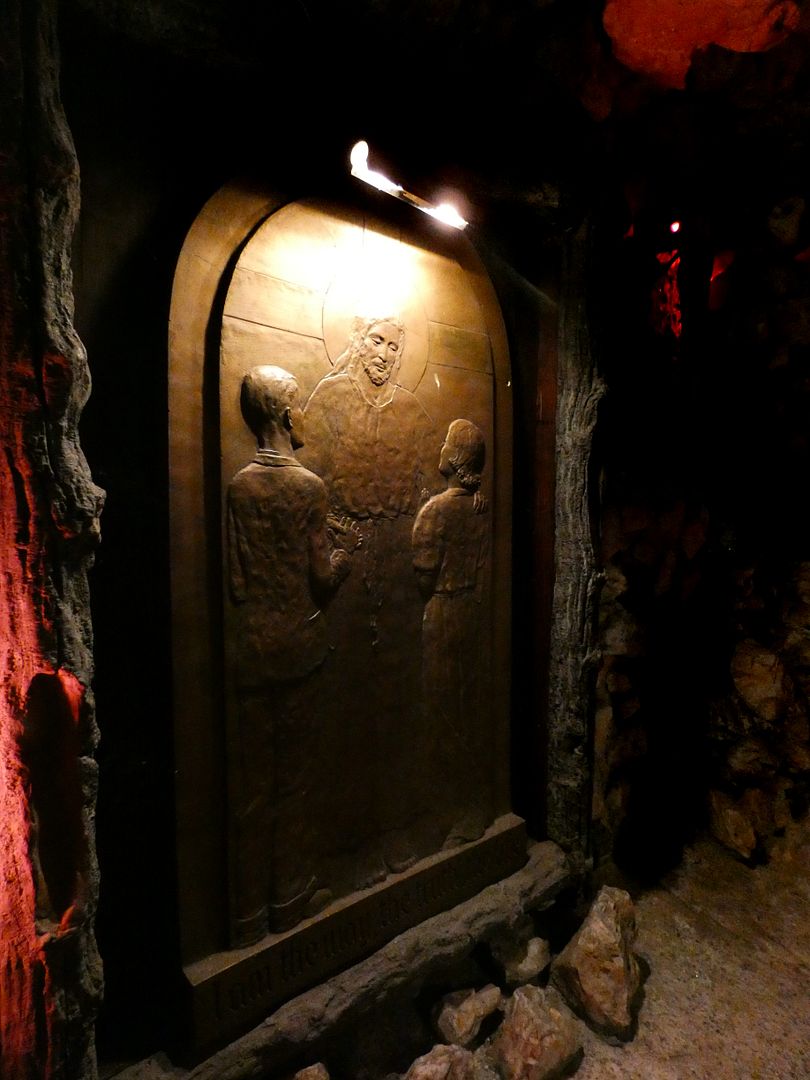
Although Rodriguez contributed some other fantastical features, like a stone foot bridge and a koi pond, his most notable contribution to the cemetery is his fake cavern (a.k.a. the grotto), which tells the story of Jesus Christ, from birth to death and resurrection (despite the fact that the cemetery itself is non-sectarian).

The outside of the cave is concrete (like many of Rodriguez's trabajo rustico works), but he fabricated the inside from natural rock crystals from Diamond Cave in Jasper, Arkansas.

In the cradle of the cave, it feels like a wonder of the natural world: bioluminescence, perhaps, or maybe even an optical illusion. But it's all been carefully crafted with a colored artificial lighting scheme and tinted concrete.
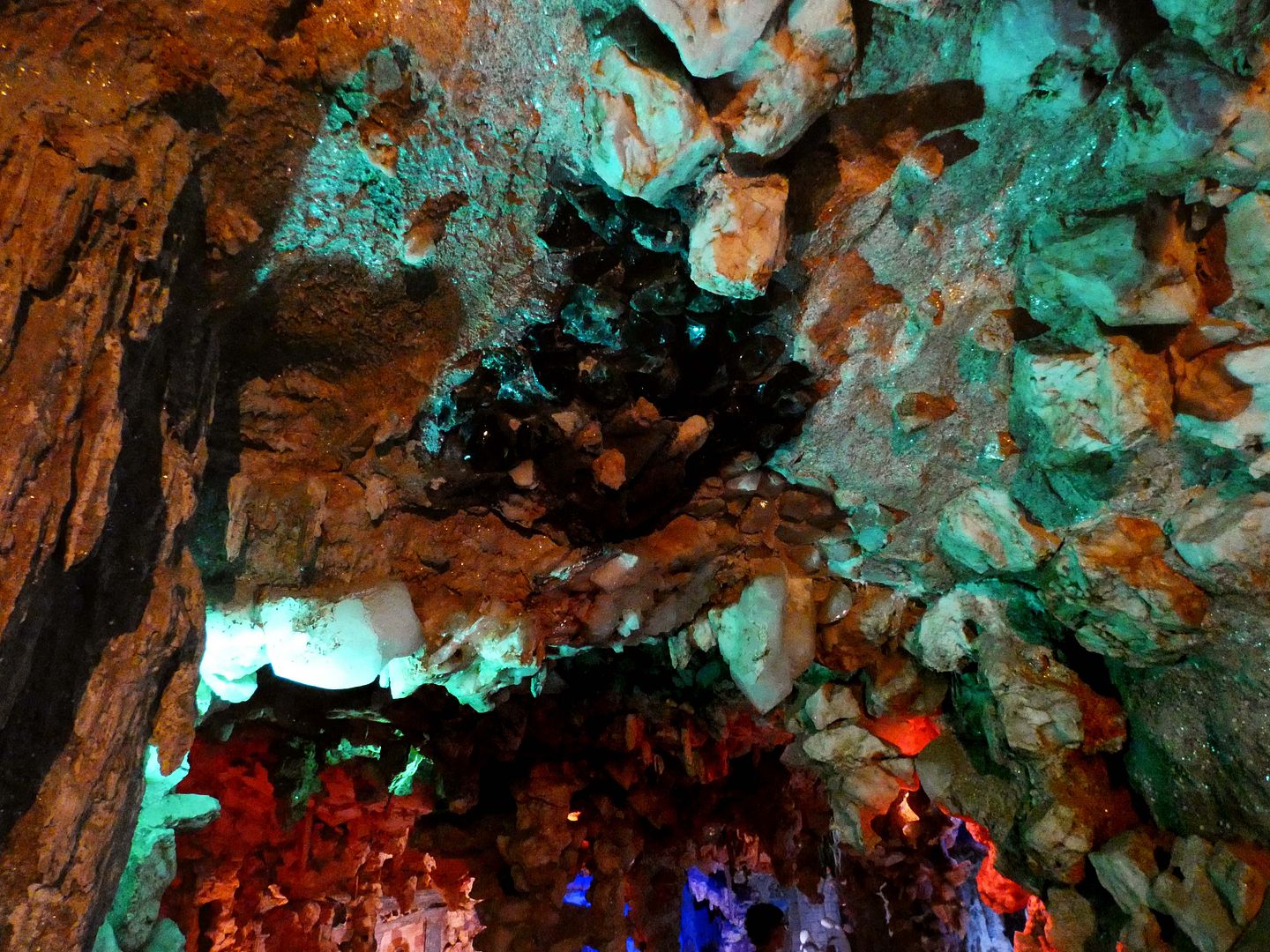
It took eight years of hard labor—much of it done in secret, underground, and with rudimentary tools (like kitchen utensils)—to complete what's now considered a masterpiece (and part of a national historic landmark). Although it's the work of a master professional, Rodriguez's somewhat mysterious pedigree has made some people think he was self-taught and lump him in with folk artists.


...like a nativity scene and "The Crucifixion," a relief sculpture by Rodriguez himself.
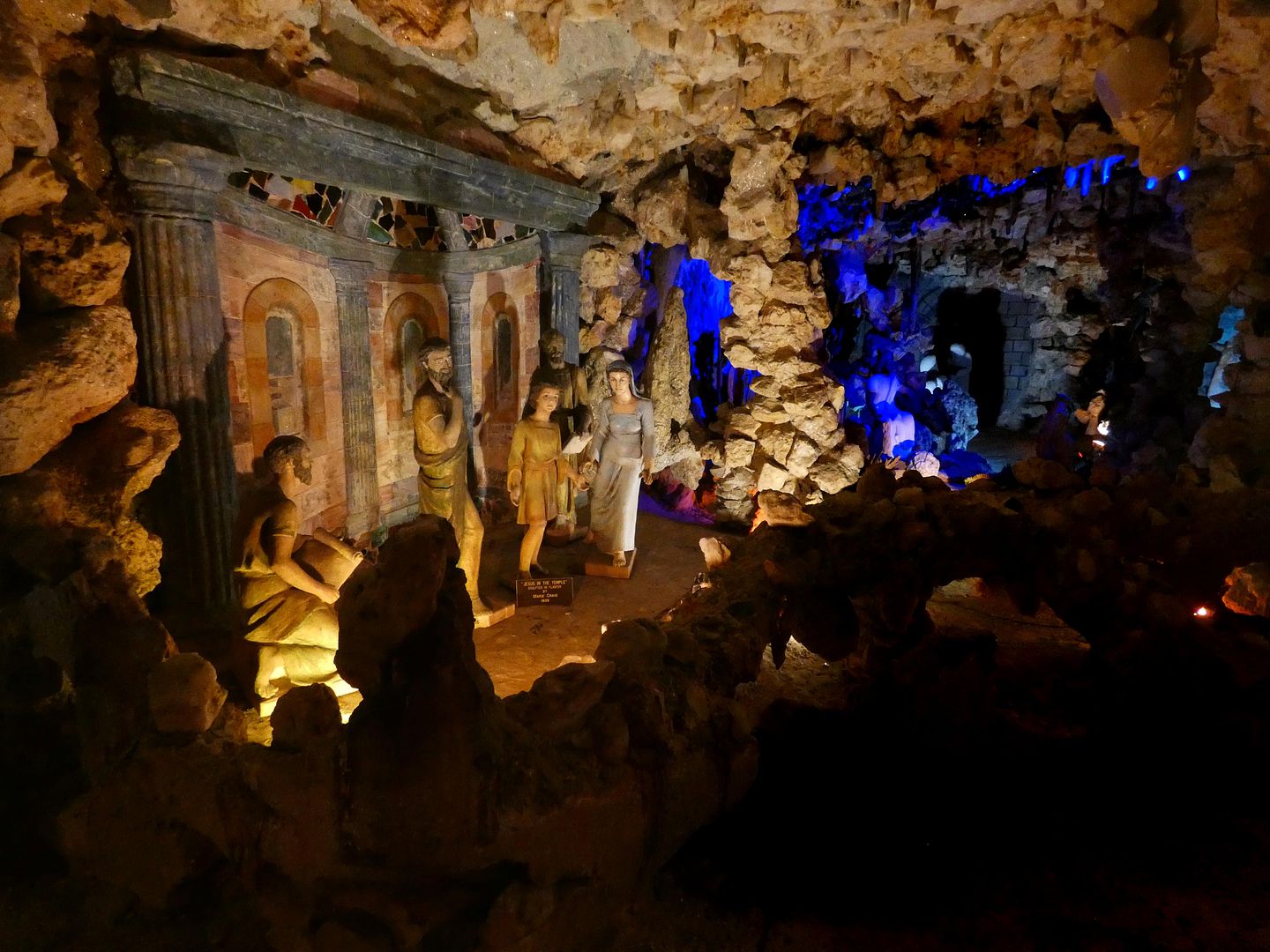

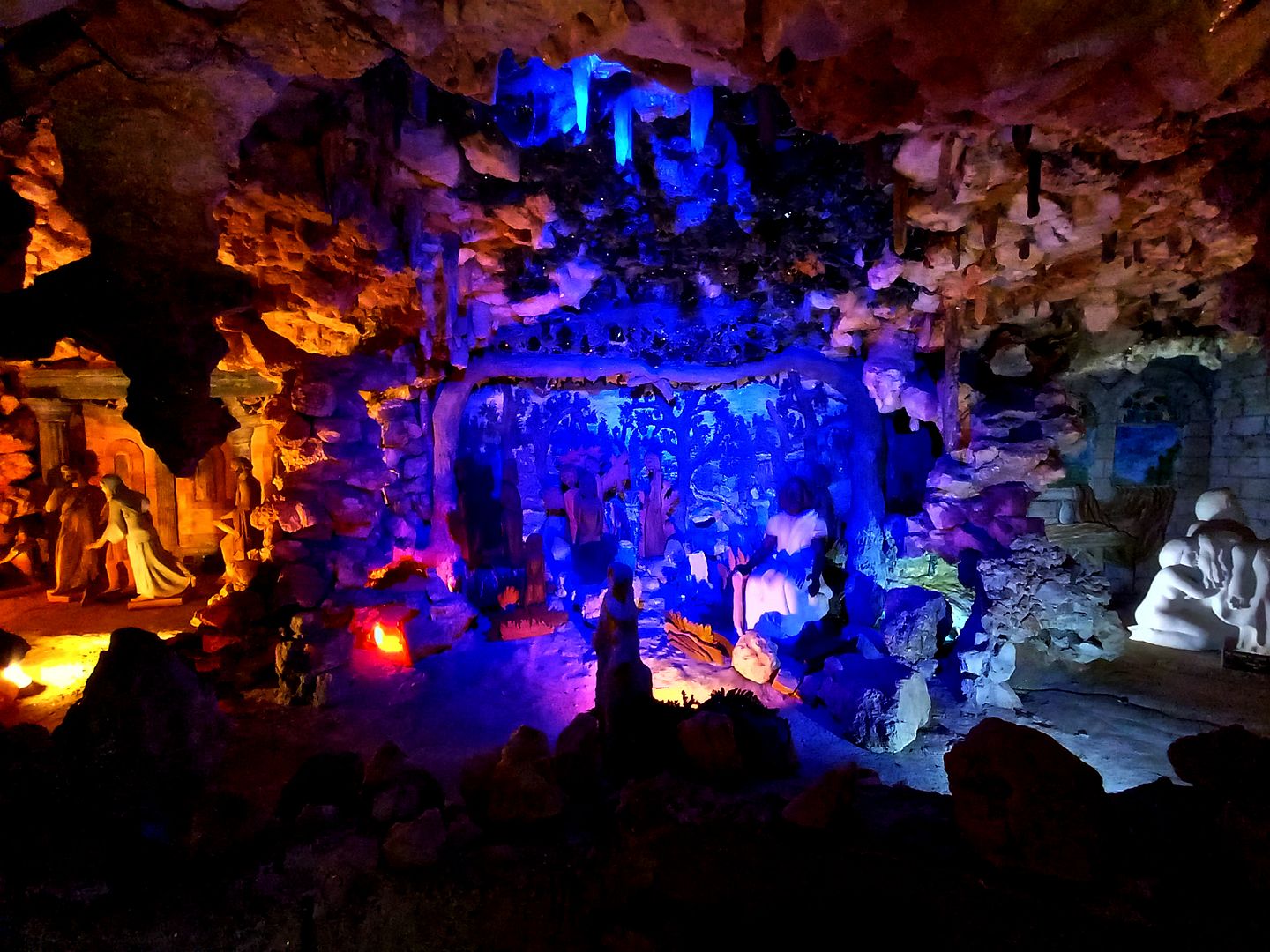

More sculptures came later, too, like Marie Craig's plaster "Jesus in the Temple" (1939)...

...which depicts the boy savior in a scene probably inspired by earlier paintings of "Christ Among the Doctors."

In the 1970s, a local young sculptor named David Day stepped in and created more figures for the grotto interior, like his "Sermon on the Mount" (1978), which is bathed in a deep blue hue.
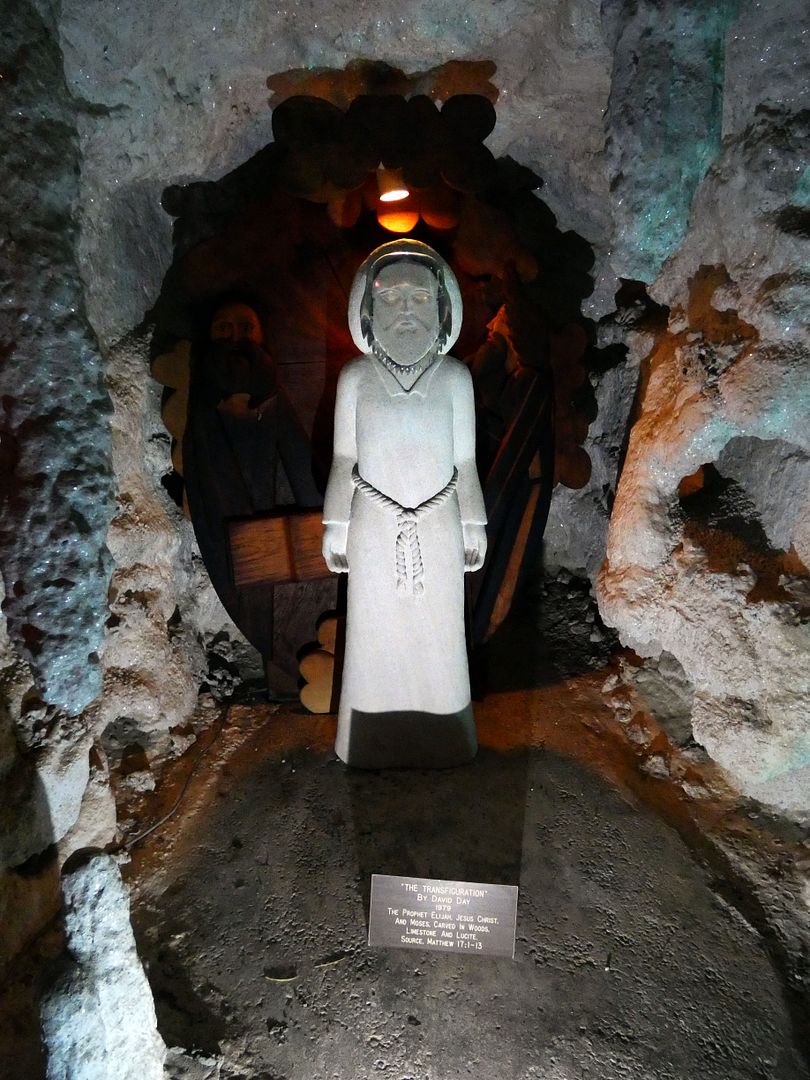
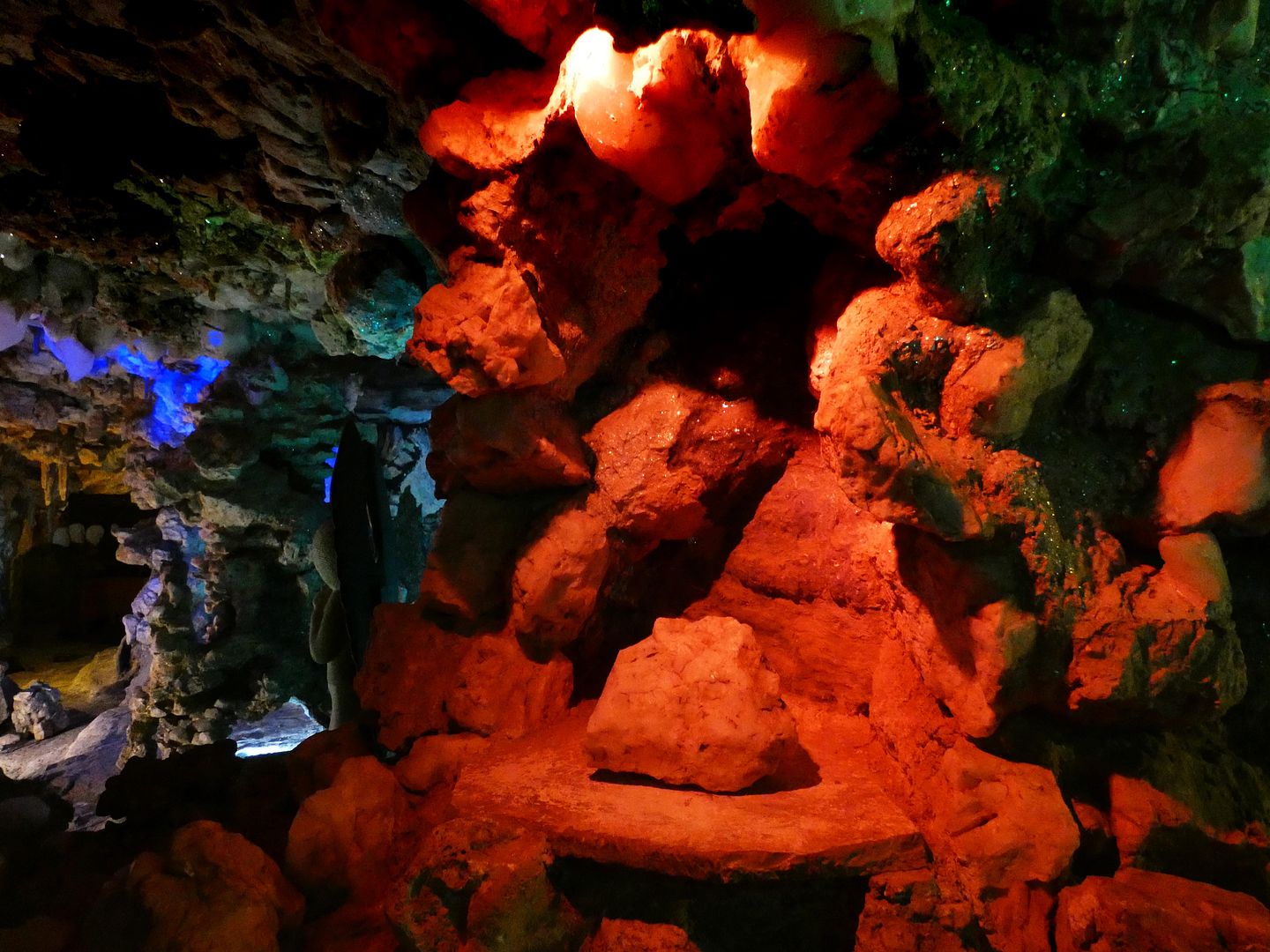

In 1979, Day created "The Transfiguration," featuring the prophet Elijah, Jesus, and Moses all carved in wood, limestone, and lucite.

In many cases, Day's sculptures are situated in front of a background that was created by Rodriguez—including his only known paintings. In many ways, it's the cave itself that's the real attraction (and not the 10 niches of other artwork).
Although the national landmark designation is comprised of the entire collection of his artworks—including bridges, benches, a wishing chair, rock towers ("God's Garden"), and more‚the cave is probably the strangest, and most compelling of them all.
Related Posts:

No comments:
Post a Comment